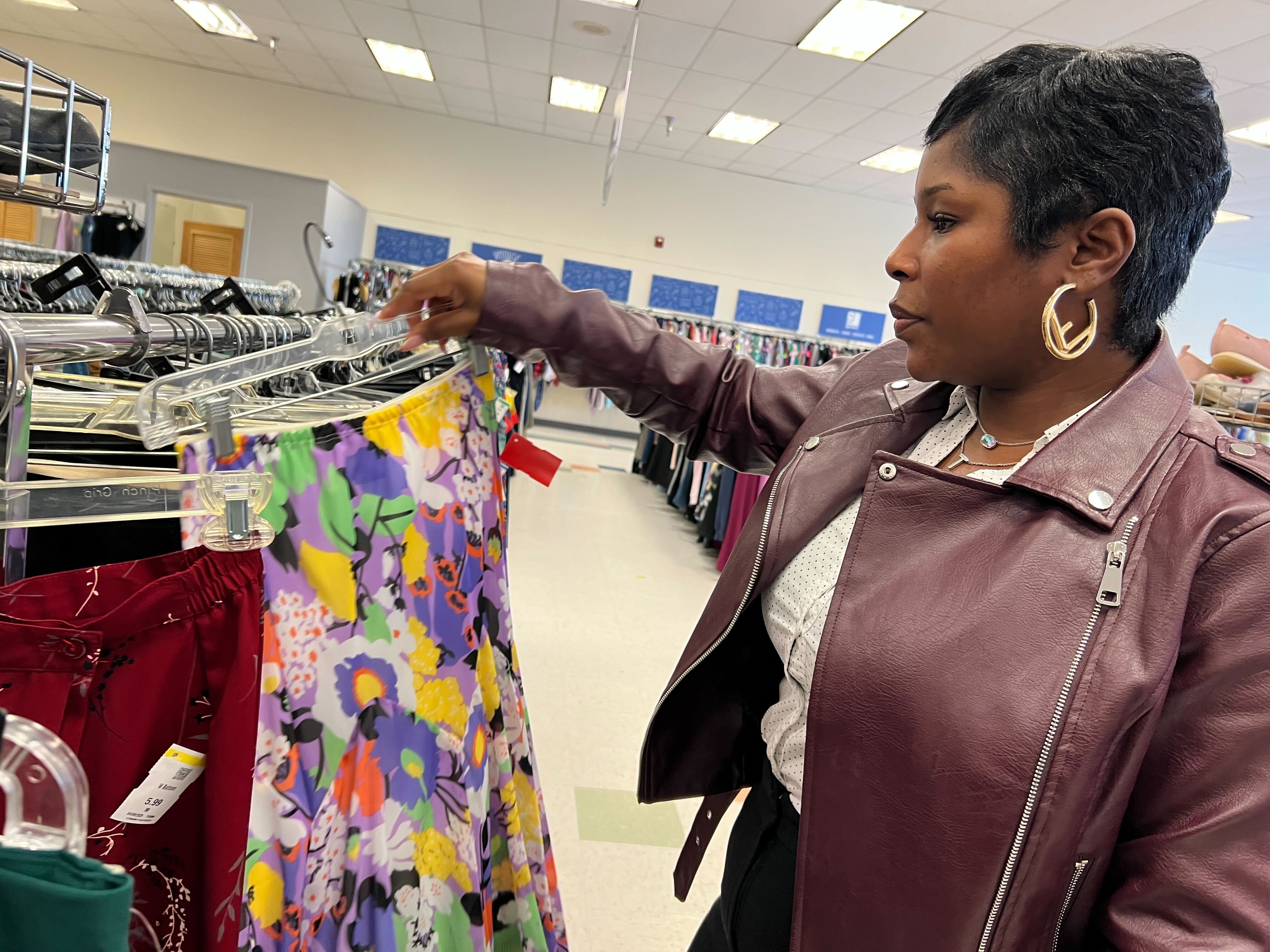
This story is part of the WHYY News Climate Desk, bringing you news and solutions for our changing region.
From the Poconos to the Jersey Shore to the mouth of the Delaware Bay, what do you want to know about climate change? What would you like us to cover? Get in touch.
Nick Kril loves to browse the racks at thrift and vintage stores to find distinctive looks for his closet.
“One of my favorite things about shopping secondhand is that everything is unique. There’s usually only one of each item in the store,” said the Philadelphia resident.
Kril also works as an inventory director at The Wardrobe, a nonprofit that provides free clothing to anyone who needs it, and operates a storefront full of secondhand clothes.
“I really love older things, and I’m very picky about things like fit and fabric,” he said. “So, I’m always turning things inside out, looking at how they’re made, looking at what they’re made of, looking for those really wonderful fabrics that you don’t find in fast fashion.”
Fast fashion produces lower quality clothes at a fast pace for consumers who want to replicate designer trends at a low price. The industry also has environmental consequences. Online consumers are encouraged to buy more clothes and wear them less frequently — meaning more items end up in landfills.
But as the trade war between the U.S. and China puts a strain on the fast fashion industry, prompting some online fashion stores’ app usage to plummet, thrifting proponents hope more shoppers will turn to sustainable clothing.
“I am hoping that people turn more to thrifting,” said personal stylist Tia Jones. “I feel like I’ve seen an increase in it in the last couple of years.”
The founder of styling company Tia Couture said shopping secondhand reduces waste.

More than 11 million tons of textiles were sent to landfills in 2018 alone, according to the U.S. Environmental Protection Agency. Fabric in landfills don’t decompose and release climate-warming greenhouse gases. Toxic chemicals and dyes from textiles can also leach into soil or groundwater. Much of the waste generated in the U.S. is exported to other countries, such as Chile and Nigeria, polluting their environments.
“We’ve come to rely on inexpensive materials, which ultimately are predominantly coming from fossil fuels, which then impacts the environment,” said Clare Sauro, a fashion and textile history professor at Drexel University. “And then, of course, we’re consuming a lot, which winds up in landfills.”
link






